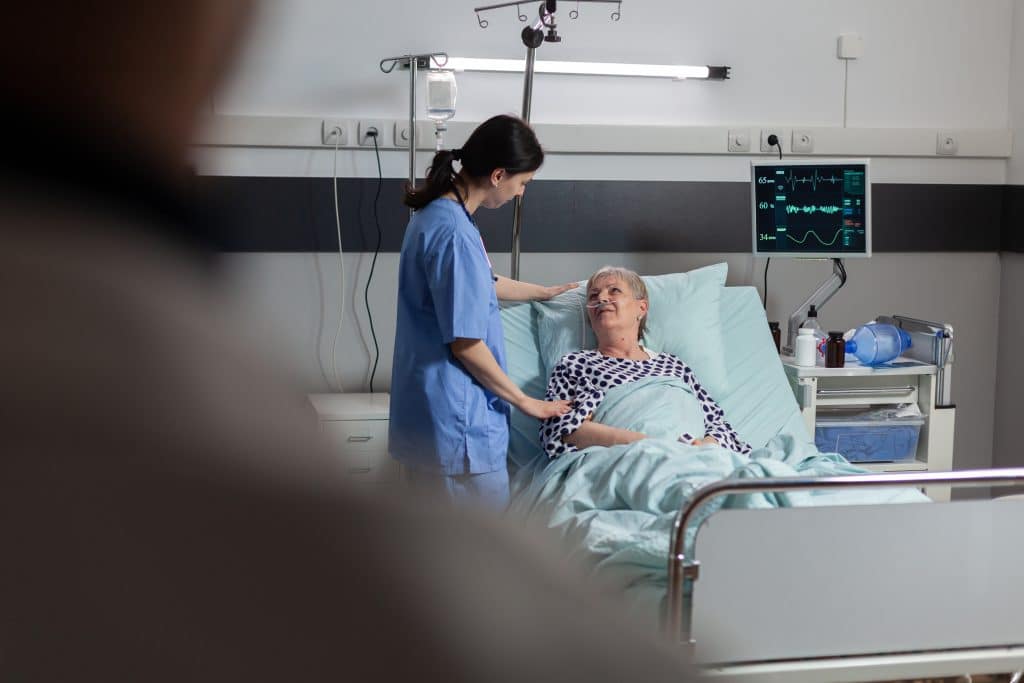What is early mobilisation? The benefits of early mobilisation in ICU and Hospitals
The concept of early mobilisation in ICU and in Hospitals has gained significant attention in recent years and for good reason.
Traditionally, patients admitted to the intensive care unit (ICU) were often confined to their beds due to concerns about the fragility of their health. However, emerging evidence has shown that early mobilisation, involving the initiation of physical activity and rehabilitation as soon as feasible, can bring about numerous benefits for patients.
In this blog article, we will explore the advantages of early mobilisation in ICU and hospital settings, highlighting its potential to improve patient outcomes and quality of life.

What is Early Mobilisation?
Firstly, what is early mobilisation?
Early mobilisation is essentially getting critically ill patients up and moving as soon as safely and physically possible. It involves rehabilitation activities like sitting on the edge of the bed, simple exercises, and even walking with assistance.
Traditionally, patients in the ICU were kept sedated and bedridden to minimize stress and complications. However, research has shown that prolonged immobility can lead to a range of adverse effects, including muscle weakness, joint stiffness, decreased lung function, increased risk of infections, and longer hospital stays.
Now, let’s dive into the benefits of early mobilisation.
Faster discharge and increased patient flow
Studies have indicated that early mobilisation programs in ICUs can lead to a significant reduction in the length of stay. By facilitating the recovery process and minimizing complications, patients are more likely to be discharged earlier.
This not only improves patient flow within the hospital but also reduces the risk of hospital-acquired infections and other adverse events associated with prolonged hospitalization. Additionally, early mobilisation may contribute to cost savings by shortening ICU and hospital stays.
Reduced ICU-induced weakness
Prolonged bed rest and immobility can lead to severe muscle weakness and loss of function in ICU patients.
Early mobilisation programs, which involve guided exercises, physical therapy, and ambulation, help prevent muscle wasting and preserve muscle strength.
By promoting muscle activity, patients are better equipped to perform essential tasks such as sitting, standing, and walking, reducing their dependence on mechanical ventilation and other life support measures.
Avoidance of respiratory complications
Immobility can have detrimental effects on the respiratory system, leading to atelectasis (collapsed lung tissue), pneumonia, and respiratory muscle weakness. Early mobilisation, including deep breathing exercises and pulmonary rehabilitation, can counteract these issues.
Regular physical activity helps to expand lung capacity, clear secretions, and enhance oxygenation. By improving respiratory function, early mobilisation can reduce the risk of complications and facilitate weaning from mechanical ventilation.
Psychological benefits
ICU-acquired delirium is a common occurrence among critically ill patients, resulting in confusion, disorientation, and cognitive impairment.
Early mobilisation, along with cognitive stimulation activities, has been shown to reduce the incidence of delirium and promote mental well-being. By engaging patients in purposeful movement and interaction, early mobilisation can help preserve cognitive function and prevent long-term cognitive decline.
Early mobilisation also promotes a sense of independence, empowerment, and engagement in the patient’s own recovery. It provides patients with a sense of purpose and control, reducing anxiety, depression, and post-traumatic stress disorder (PTSD) symptoms. By fostering a positive psychological state, early mobilisation contributes to overall patient satisfaction and improves the overall hospital experience.
Conclusion
The benefits of early mobilisation in ICU and hospitals cannot be overstated. Reduced hospital stays and bed occupancy, increased patient flow, as well as numerous benefits to the patients themselves are just a few of the many advantages associated with early mobilisation.
As hospitals continue to recognise the importance of early mobilisation, integrating it into standard practice will undoubtedly become a key part of the discharge process, paving the way for better patient care and recovery and a reduction in system-wide pressure.
Related articles
How do patient stretchers improve efficiency and patient flow in hospitals?
5 Best Patient Handling Risk Assessment Tools in 2023
What causes musculoskeletal injuries (MSIs) in hospitals? – 6 of the most common causes
Get in touch
Got a question or want to send us a message? Let’s talk.